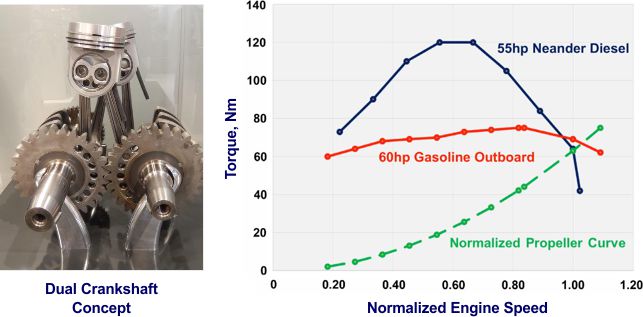FEV and Neander develop turbo-diesel outboard marine engine
11 April 2014
At the SAE Congress in Detroit, MI, FEV North America showed a diesel outboard marine engine developed in cooperation with Neander Motors AG. It is the world’s first turbo-diesel outboard marine engine, according to the developers. The engine was first revealed at the Aachen Engine Colloquium in October 2013.
As a new participant in the marine engine market, Neander Motors cooperated with FEV in the development of a small outboard engine for the 40-70 hp commercial market, which is dominated by transport, hauling and commercial fishing. A global development team was organized that created the engine over a two year period. FEV provided CAE and testing support for the program.
Outboard marine engines are almost exclusively gasoline. Their advantages include small size, low weight and cost, and ease of installation and servicing. Neander’s diesel approach offers a high torque-to-weight ratio, low specific fuel consumption and the potential tax advantages with diesel fuel.
Displacing just 800 cc, the Neander diesel features a chain-driven camshaft, hydraulic chain tensioner, common-rail direct fuel injection and “square” 80 mm bore and stroke. What makes it unique, however, is its double crankshaft. Each piston pin is designed as a “space ball” connected to a pair of side-by-side connecting rods that drive a pair of offset counter-rotating crankshafts. This layout results in balanced, smooth operation that is required in the marine outboard application.

The inline two-cylinder turbo-diesel has a maximum rated speed of 4,500 rpm and produces 55 hp (45 kW). Maximum torque is 120 Nm, generated at 2,000 rpm. In its basic form, the Neander Motors outboard weighs 155 kg, stands 1241 mm tall, and is available in both 20-in and 25-in shaft versions.
Source: FEV